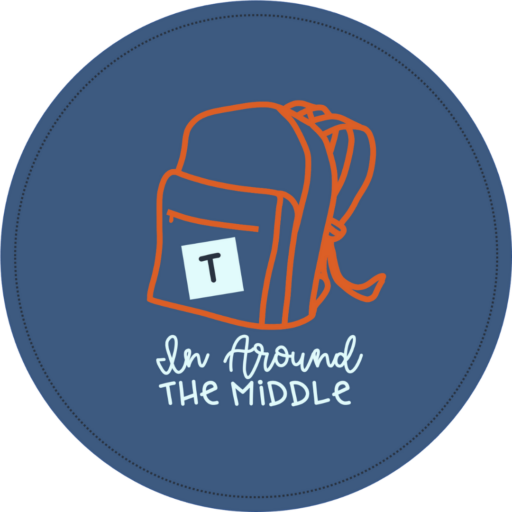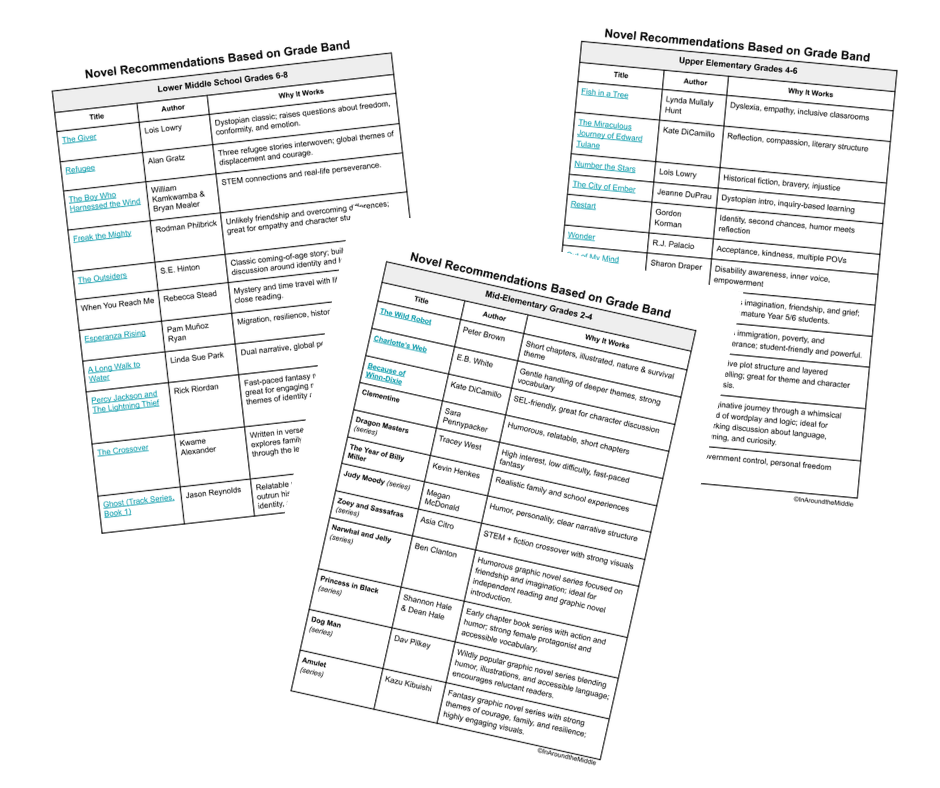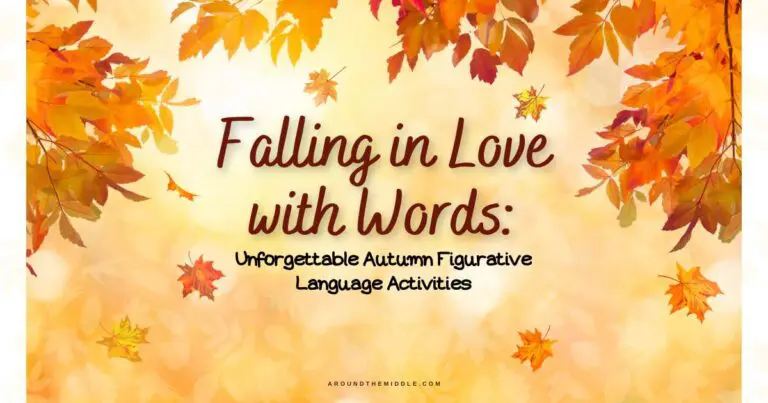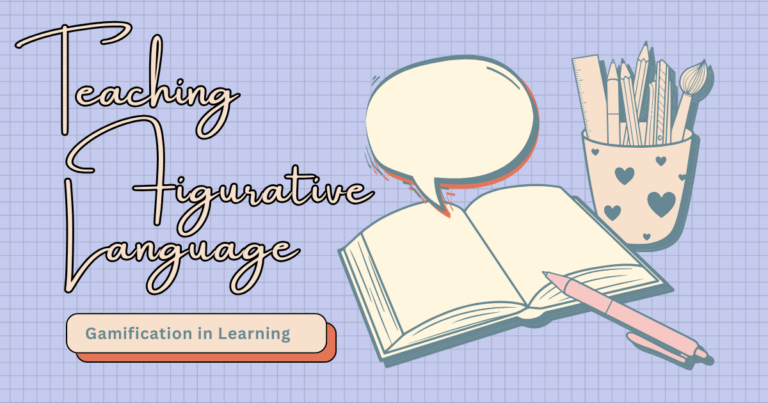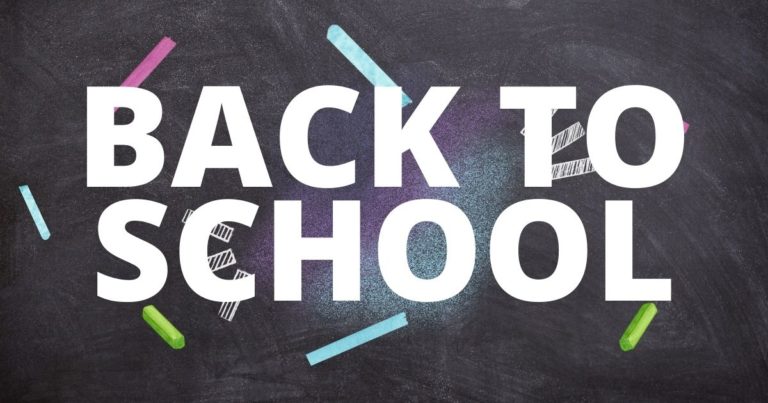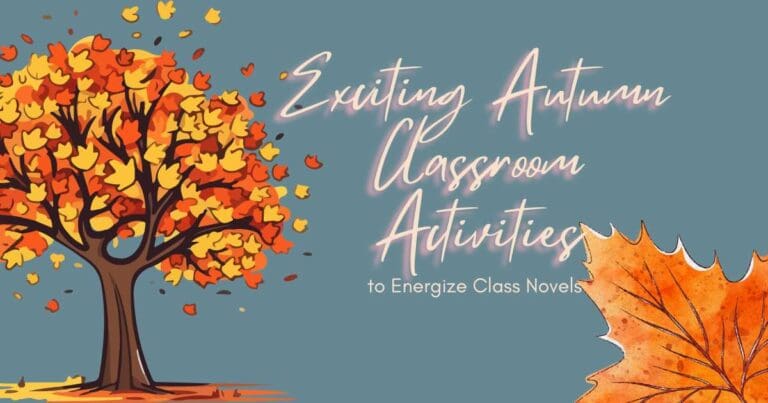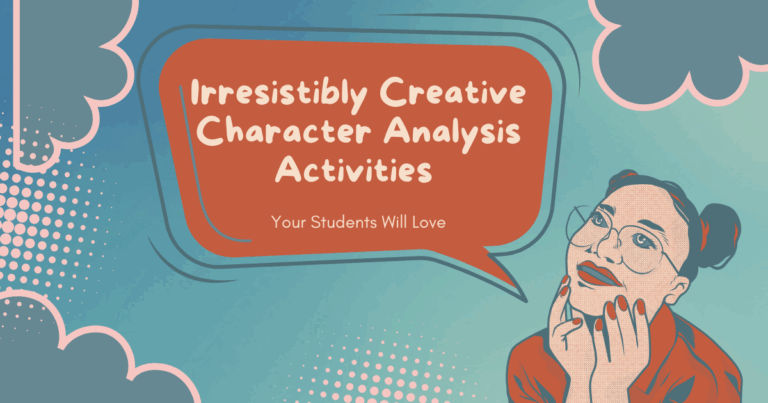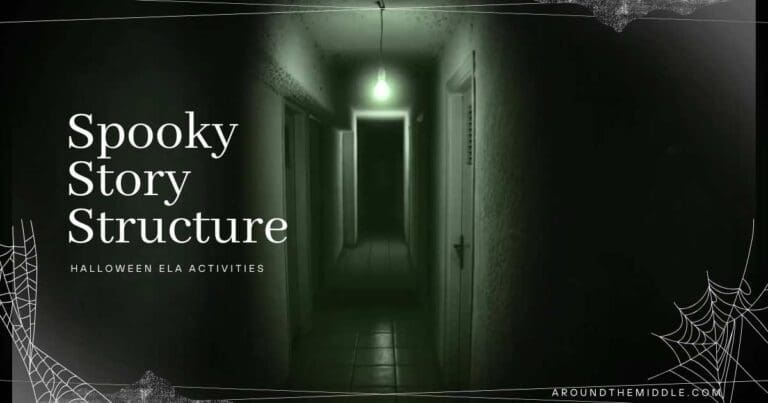Best Back to School Books for Grades 2–4: How to Choose the Right Class Text
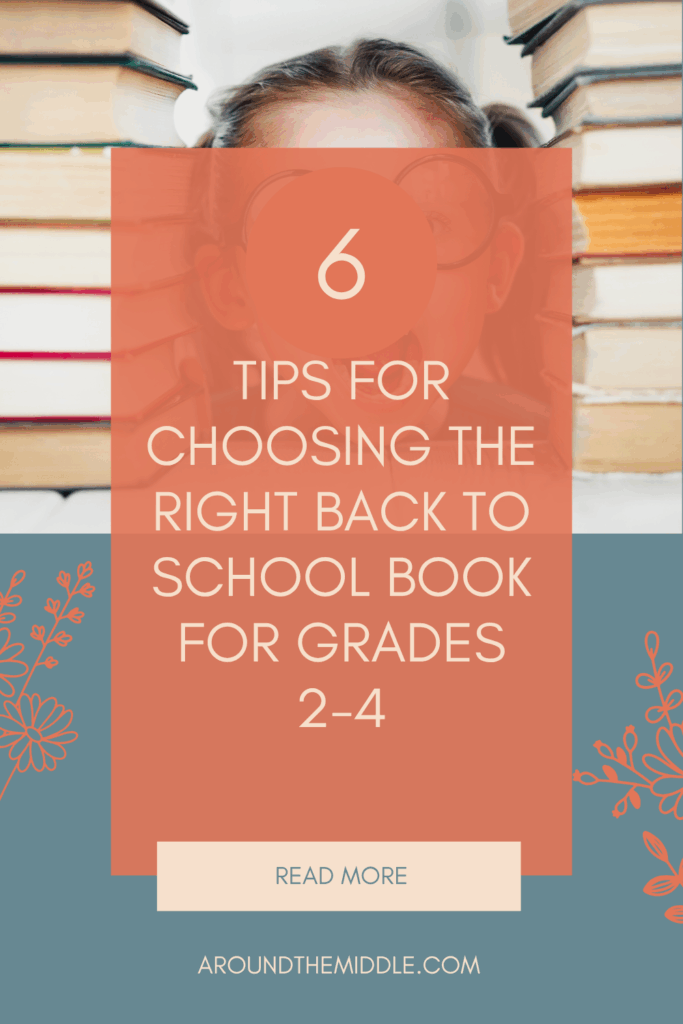
Whether you’re choosing a read-aloud, guided reading novel, or a whole-class book study, selecting the right back to school books is key to building engagement and community. As teachers head into a new school year, one question often comes up: What novel should I start the year with? For mid-elementary grades—typically Grades 2–4—the right choice can make or break reading engagement for the term.
This is the first post in a three-part series to help you select the best back-to-school books that hit the sweet spot for your students’ reading development. Grab your free downloadable recommended novel list here. Now, let’s start with mid-elementary learners.
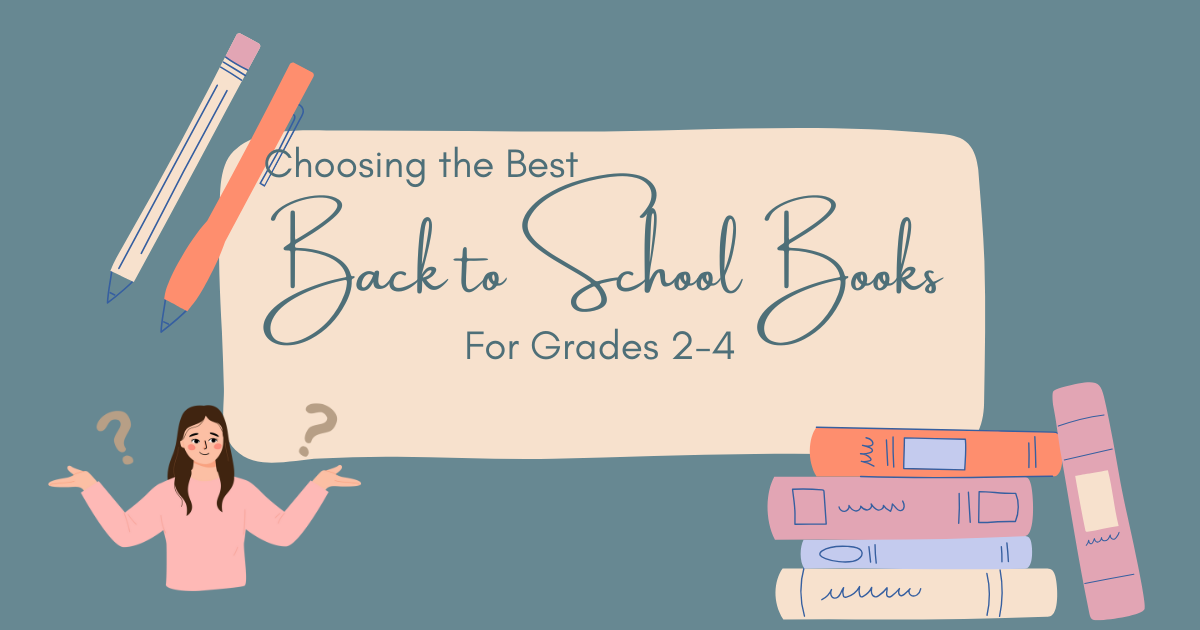
1. Match the Book to the Reader, Not Just the Grade Level
At this stage, reading ability can vary wildly. One student may still be decoding slowly while another is ready for longer paragraphs and richer vocabulary. Choosing a novel solely because it’s “Year 3 appropriate” often backfires. Instead, preview the text with your students in mind:
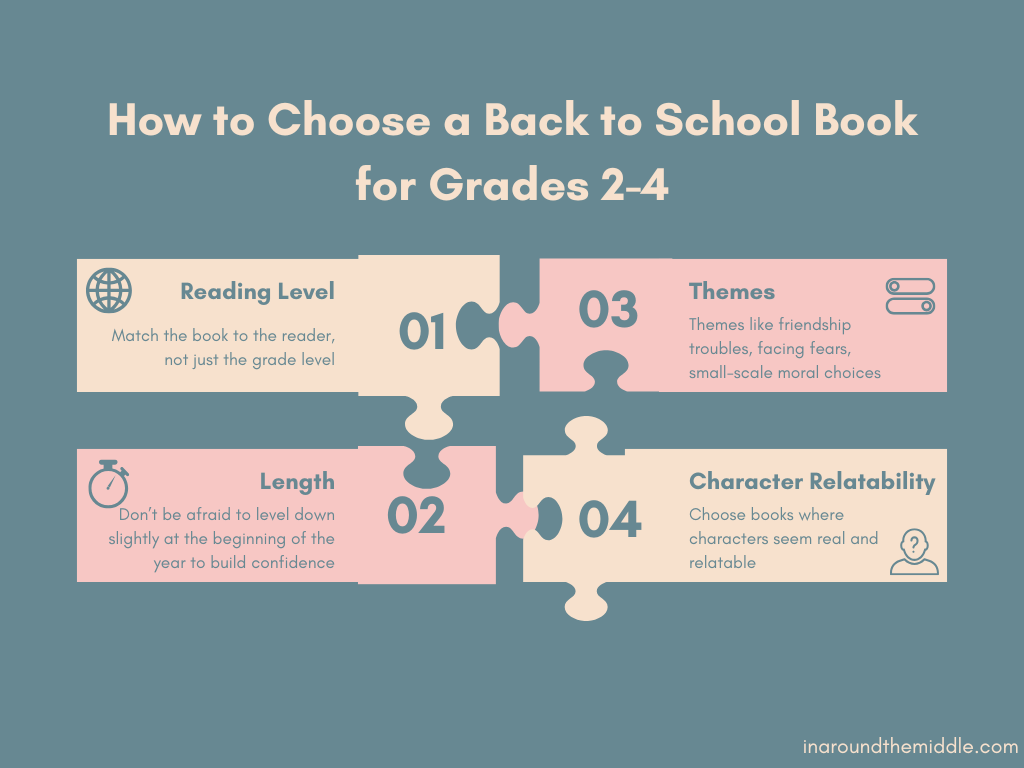
- How complex is the vocabulary?
- Are the sentence structures varied and readable?
- Are students emotionally ready for the themes?
- Will they relate to the characters’ experiences?
Don’t be afraid to level down slightly at the start of the year if it helps build confidence. A well-supported, slightly easier novel can open the door to more complex texts later.
2. Look for Bridge Books that Build Confidence
Students in this age range are transitioning from early readers to more independent chapter books. The best novels provide just enough challenge without overwhelming them. When choosing back to school books, look for:
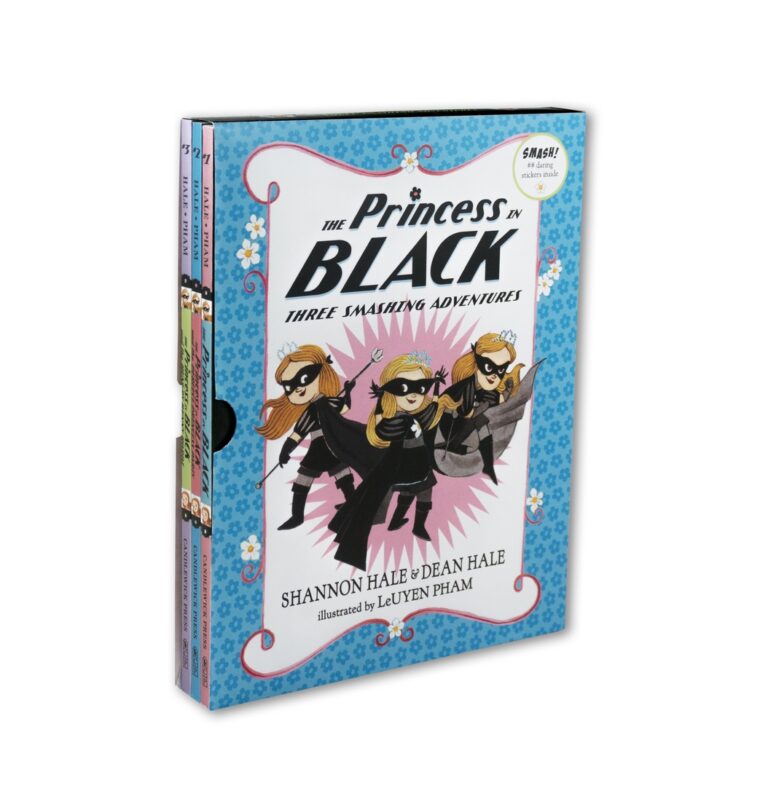
- Familiar or recurring characters (series books work well here)
- Short chapters with clear structure
- Predictable storylines with occasional twists
Series like The Princess in Black, Judy Moody, Dog Man, or The Wild Robot offer consistency while gradually building vocabulary and stamina. The Princess in Black was a favourite in our house when the kids were younger, and even as teens they still point to the dog and say “Behave Beast!” when she barks at the delivery driver. Once students get started on a series they like they are hooked!
3. Themes That Resonate with 7–9-Year-Olds
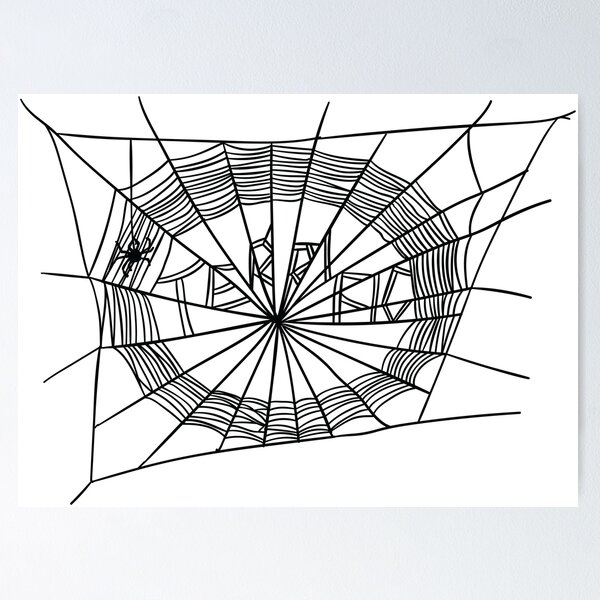
Not all themes are appropriate—or interesting—for this age group. Stick to stories where:
- Characters navigate friendship troubles
- They face fears or learn persistence
- They deal with fairness, honesty, or small-scale moral choices
Novels like Because of Winn-Dixie, Charlotte’s Web, or Clementine bring heart and depth without being too heavy.
4. Don’t Underestimate the Power of Pictures in Back to School Books
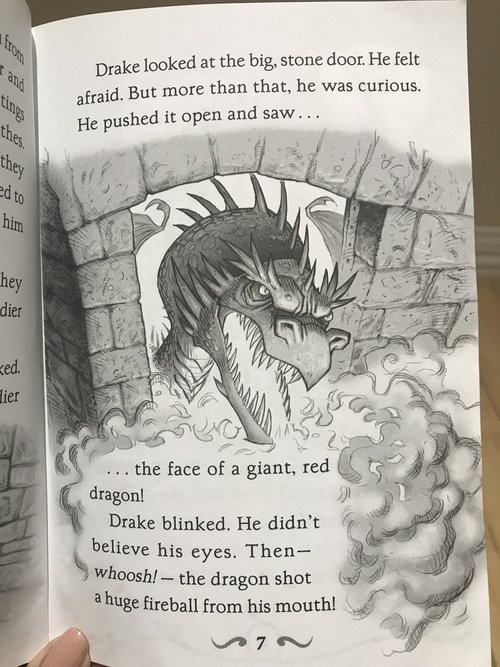
Illustrations still matter at this stage. They aren’t “babyish”—they’re a scaffolding tool. They are also perfect for back-to-school books for younger readers.
Consider graphic novels or illustrated texts to:
- Support struggling readers
- Teach visual literacy
- Offer engagement to the whole class
Books like Narwhal and Jelly, Dragon Masters, or Amulet can also be strong starting points for reluctant readers.
5. Read-Aloud or Independent? Know the Purpose of your back to school books
Before selecting a text, ask yourself: Is this for shared reading, or independent novel study?
Use read-alouds to:
- Model fluency
- Pause and unpack complex ideas
- Engage lower-level readers
Use independent reads when:
- Students are ready to apply comprehension strategies solo
- You want to assess written responses to text
- You’re differentiating based on reading groups
There’s no rule that says your first classroom novel must be read independently—build up to it if needed. I always have a class novel on the go that I read out loud to my class. That way everyone has access to a book that is written for their interest level, regardless of their reading level.
6. Tried-and-True Mid-Elementary Picks
Here are a few strong options to start your year:
| Title | Why It Works |
|---|---|
| The Wild Robot by Peter Brown | Short chapters, illustrations, survival and friendship themes |
| Charlotte’s Web by E.B. White | Classic, deep themes handled gently |
| Because of Winn-Dixie by Kate DiCamillo | Emotionally accessible, great for discussions |
| Clementine by Sara Pennypacker | Humor, relatable characters, simple structure |
| Dragon Masters (series) by Tracey West | High-interest, low-complexity, ideal for early Grade 3 |
Conclusion: With back to school books, Aim for Confidence First, Complexity Later
When choosing your first novel of the year for a mid-elementary class, start with what builds confidence and connection. Complexity can come next. Choosing the right book sets the tone—not just for reading, but for class culture, too.
Stay tuned for Part 2 of this series, where we explore novel choices for upper elementary students—the age when themes deepen and text complexity takes centre stage.
Would you like a downloadable list of novel recommendations by grade band? Grab it here and be sure to check out my TPT store for engaging movement-based novel activities perfect for grades 2-4!
Teaching a different grade band? Part 2 of this series covers Grades 4–6 with developmentally appropriate strategies and book picks to help you start the year strong.
Happy teaching
